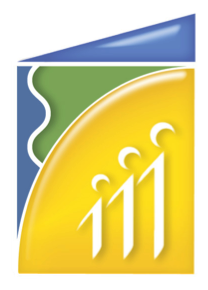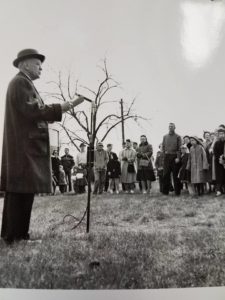History
The Beginning
Like many other industrial heartland American cities, the Ashtabula area experienced a ground swell of population growth during the 1950’s. The expanding chemical industry and increasing lake port activity contributed significantly to the growth. Ashtabula’s proximity to industrial areas, its natural water supply, railroads, lake shipping, and its workforce and other resources were expected to lead to more industry and a greater degree of urbanization.
These developments made it clear there would be a need for additional health, recreational, and social services in the community. Several area organizations were considering capital fundraising drives in order to build new or additional facilities. A group of civic-minded business and industry leaders met to examine the needs of these organizations. They estimated total capital requests would exceed three million dollars. They realized an orderly planning initiative was necessary to maximize the impact of capital funds and minimize competitive fundraising among the non-profit agencies in Ashtabula County.
On January 28, 1959, those civic leaders formally organized the Civic Development Corporation of Ashtabula with a mission to raise capital funds to respond to the social, cultural, and recreational needs of the community. This pioneering concept involved identifying worthy activities, soliciting and securing support, and providing oversight of fund disbursement.
The founders set basic conditions for funding projects, which have remained constant over the years. Both applicant organizations and their proposals are reviewed to identify overall potential and sustainability. The process determines, in part, if an agency has explored its full range of funding opportunities prior to seeking assistance. In addition, contributors to CDC are relieved of multiple agency requests for capital funding, while the non-profit recipients are able to focus on programming.
CDC trustees have historically relied on research to establish long-range planning needs and funding opportunities. In 1957, before the first campaign, the Trustees contracted with Community Research Associates to conduct a recreational survey of Ashtabula area to identify the true needs of the community. Following this assessment and the formal organization of CDC, a professional fundraising group, Beaver Associates, was contracted to help conduct the first campaign.
During the next several campaigns, additional research was conducted each time to ensure both the need for a capital fund drive and sufficient community support.
A decision was made in 1976 to better coordinate plans for voluntary funds for both capital needs and operational costs in Ashtabula County. CDC and the Ashtabula County United Way jointly engaged the services of Donald Kazmaier of United Way Services for a one-year period. His final report emphasized the importance of developing a working relationship between CDC and United Way of Ashtabula County for coordination of mutual activities and priorities. The increasing magnitude and complexity of the projects in both the 1975 and 1980 campaigns made it apparent to the trustees that the informal, non-professional organization that had been sufficient to handle the affairs of CDC was no longer adequate to deal with the problems, or to do the kind of planning the projects required. These factors contributed to the recruitment of professional staff in 1980 to administer both organizations. This arrangement lasted nearly ten years, until the increasing operational responsibilities required the positions to be separated, in order for each organization to be more effective.
An important organizational development in 1980 was the creation of an asset preservation policy and implementation guideline. The asset preservation policy required recipient organizations to set aside each year, in cash, the appropriate depreciation value of the asset funded by CDC. CDC’s imposition of the policy has resulted in the recipient organizations having the financial resources to address their own capital maintenance, repair, and replacement needs.
The Founding Trustees:
Theodore Carlisle
William Martin
William Kerrigan
Ford Russell
John L. Sheldon
Theodore E. Warren


